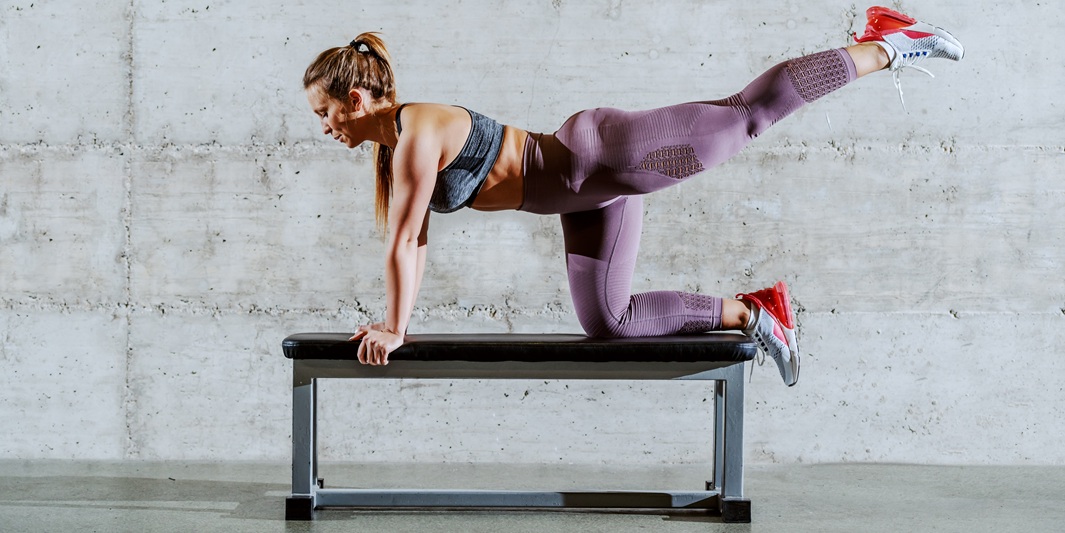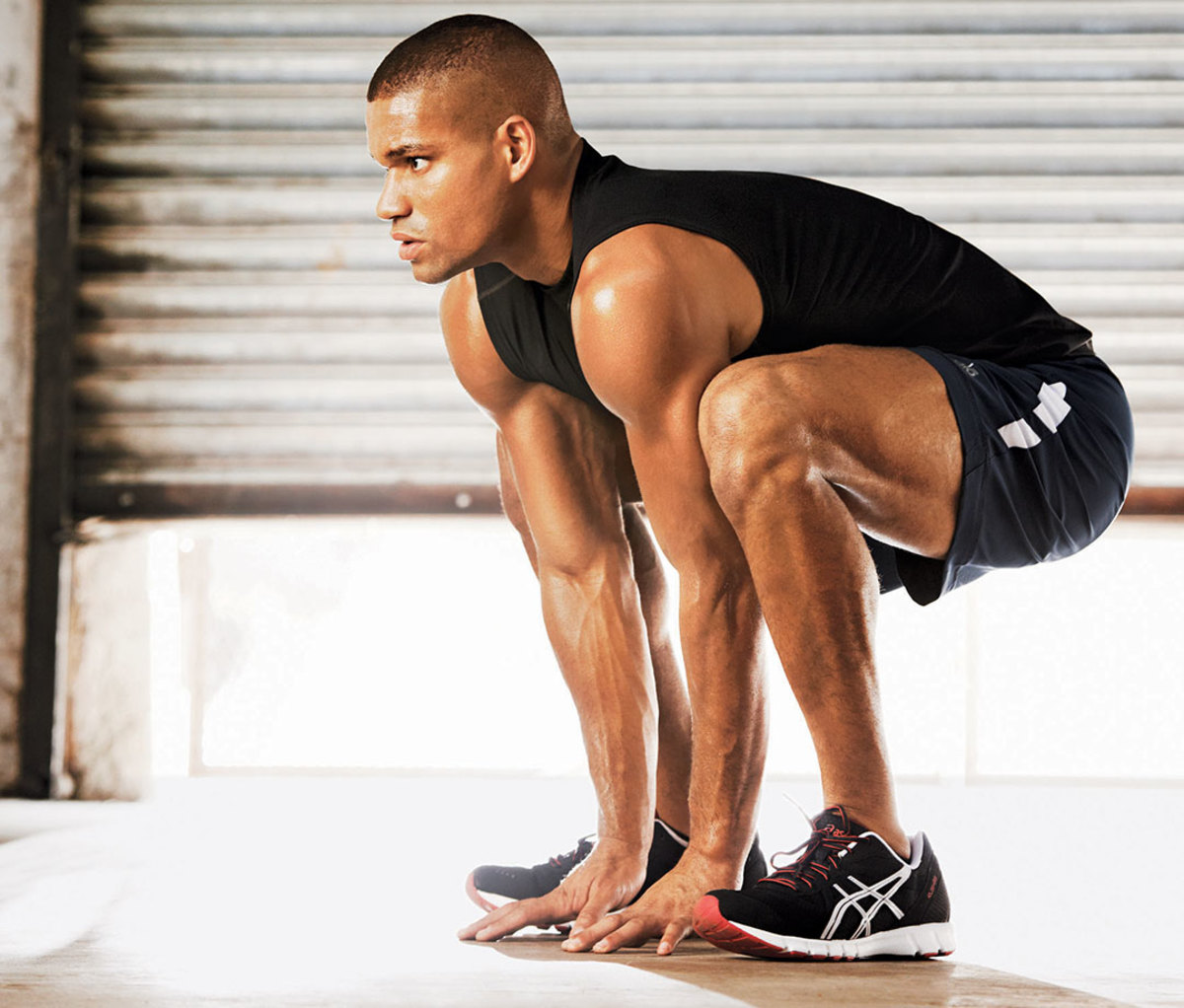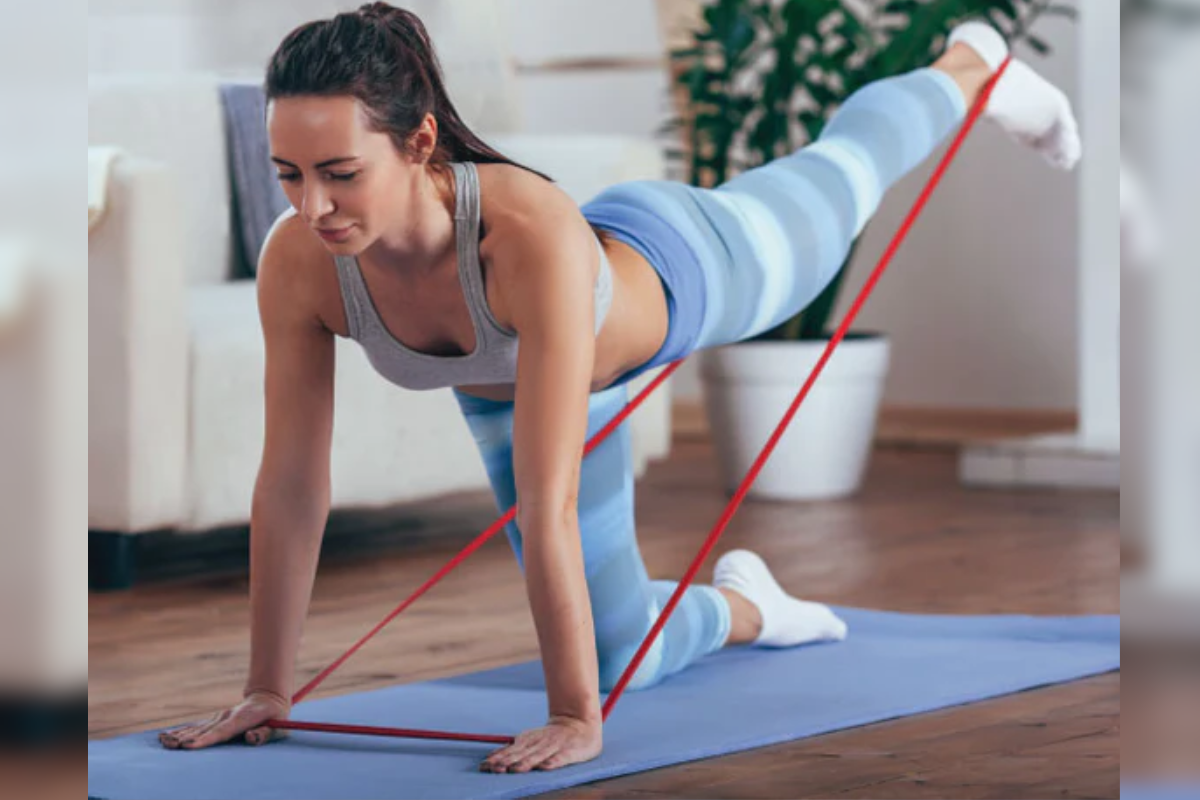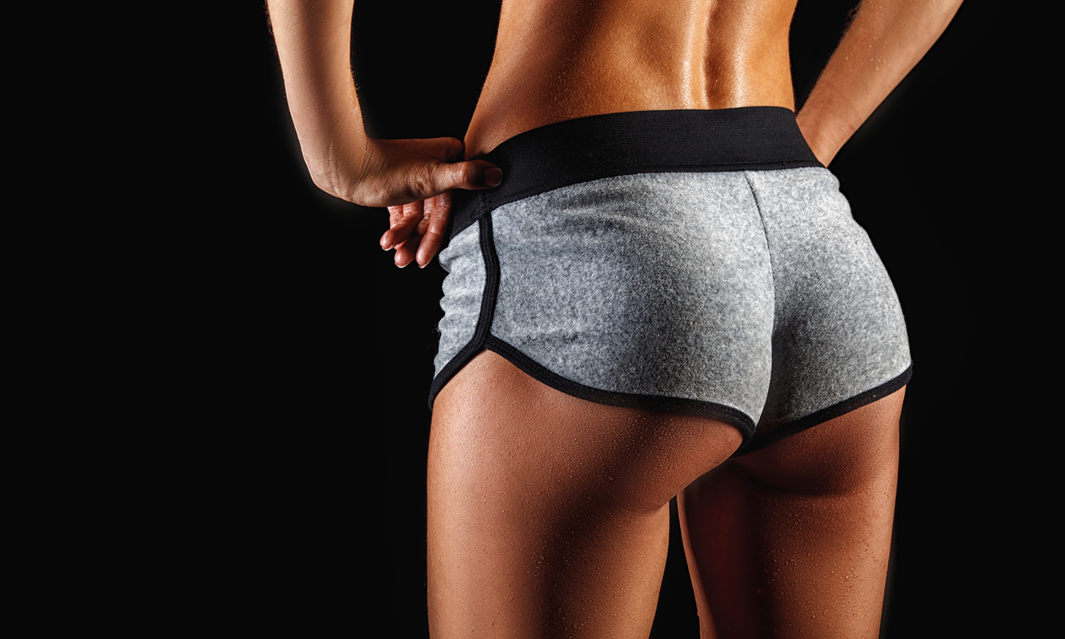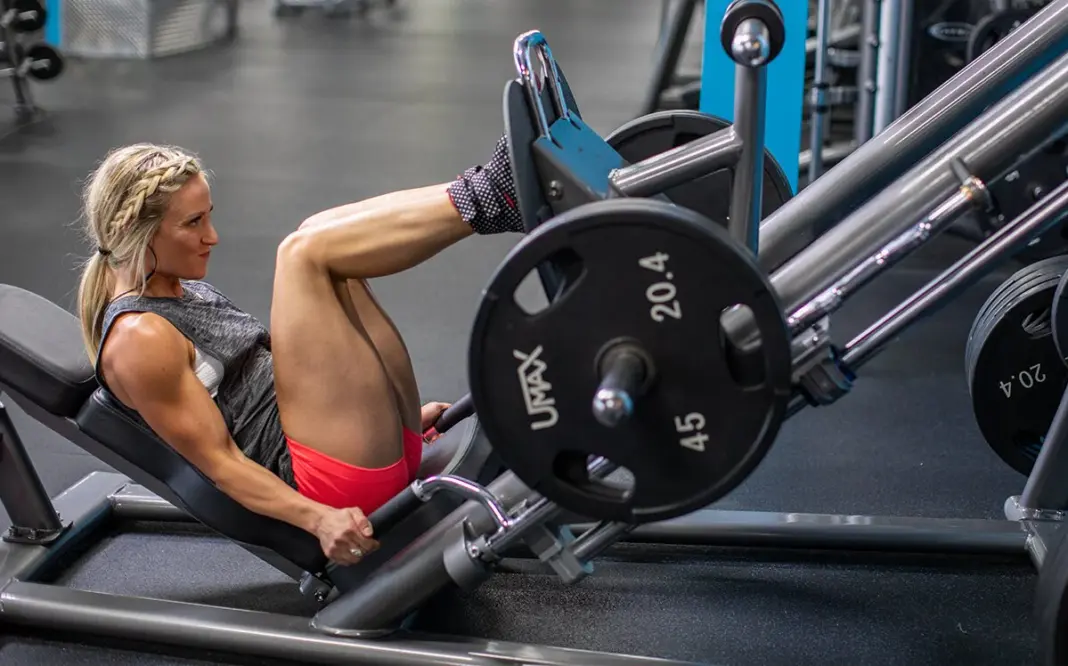Glutes + Hamstrings: How to Train Them Together Without Overlap
If you’re serious about physique development, you already know that the posterior chain — especially your glutes and hamstrings — can make or break your lower body aesthetics and performance.
Well-developed glutes give your frame balance, roundness, and power. Thick, sweeping hamstrings give your legs depth and density, especially in side poses and rear shots on stage.
But here’s the catch: glutes and hamstrings are synergists in many compound lifts. If you train them without intent, you’ll end up either overworking one or under-stimulating both.
This is especially common among bodybuilders and strength athletes who train with high frequency, volume, or intensity.
This guide breaks down how to train glutes and hamstrings together effectively, how to separate movement patterns, and how to avoid overlapping fatigue while maximizing growth. Whether you’re programming for hypertrophy, strength, or both — this is how you do it smart.
Glutes and Hamstrings: Know the Relationship
To program these muscles well, you need to understand how they function — and how they interact.
🔹 Gluteus Maximus
- Primary action: Hip extension
- Also assists in external rotation and abduction
- Heavily engaged in squats, hip thrusts, lunges, and deadlifts
🔹 Hamstrings (Biceps Femoris, Semitendinosus, Semimembranosus)
- Cross both the hip and knee
- Function: Hip extension AND knee flexion
- Engaged in deadlifts, good mornings, leg curls, and more
🔑 Key Point:
Both glutes and hamstrings contribute to hip extension, which is why exercises like Romanian deadlifts (RDLs), good mornings, and reverse lunges train both.
But that overlap can lead to redundant training stimulus, especially if you don’t intentionally include movements that bias one over the other.
The Problem With Overlap
Overlapping movement patterns — when not managed — can cause:
- Fatigue stacking (hamstrings fried before glutes even work hard)
- Lack of targeted stimulus (neither muscle gets peak activation)
- Plateaus in hypertrophy or strength
- Increased injury risk, especially to the lower back and knees
If you’re doing RDLs, lunges, and good mornings all in the same session, your posterior chain is likely taking a beating — without clear priority.
So how do we fix that?
The Training Strategy: Movement Pattern Separation
The solution isn’t to do less, but to train with specificity and structure. Here’s how to do it:
🔹 1. Separate Movement Patterns: Hip Extension vs Knee Flexion
To target hamstrings and glutes independently, use hip-hinge movements for glutes and leg curl patterns for hamstrings.
| Movement Pattern | Primary Muscle | Example Exercises |
| Hip Extension (Hinge) | Glutes & Hams | Romanian Deadlifts, Hip Thrusts, Good Mornings |
| Knee Flexion | Hamstrings | Seated Leg Curls, Lying Leg Curls, Nordic Curls |
| Glute Isolation | Glutes | Hip Thrusts, Kickbacks, Glute Bridges |
Pro Tip: In any training session, pair a hip hinge movement with a knee flexion movement to fully target the hamstrings without overlapping stress.
🔹 2. Adjust Exercise Order Based on Your Weak Point
If your glutes lag, train them first with a focus movement (e.g., hip thrusts or glute bridges) while fresh. If hamstrings are your priority, start with RDLs or leg curls.
“Train your weakness when you’re freshest — that’s when you can apply the most intensity, control, and progressive overload.”
🔹 3. Use Angles and Positions to Bias One Muscle
You can shift muscle activation by changing the mechanics slightly:
- Glute-biased RDLs: Soften knees, focus on hip drive and glute squeeze
- Hamstring-biased RDLs: Keep knees slightly straighter, prioritize stretch
- Glute bridges vs hip thrusts: Bridges have a shorter ROM but better peak glute activation
- Reverse lunges with forward torso lean = more glutes
- Step-ups with upright posture = more hamstrings/quads
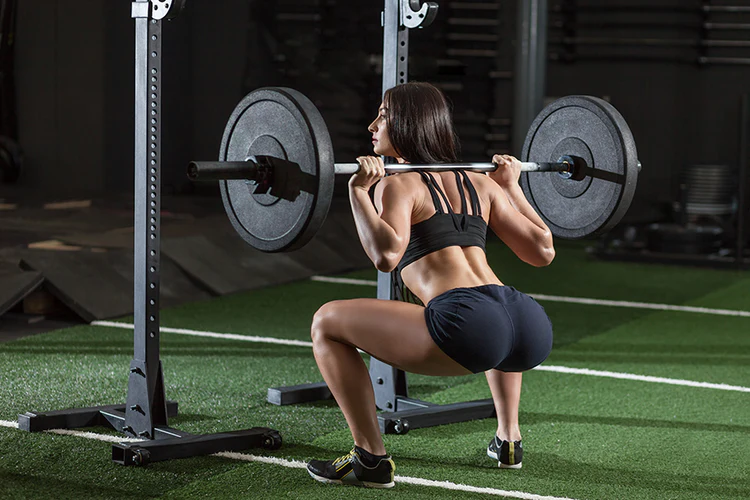 How to Structure a Weekly Split
How to Structure a Weekly Split
Here’s how to intelligently program glutes and hamstrings across your training week:
🔸 Option 1: Combined Posterior Days (2x/week)
Day 1 – Glute Focus
- Barbell Hip Thrust – 4×10
- Dumbbell Reverse Lunge – 3×12/leg (glute-biased)
- Seated Hamstring Curl – 3×15
- Cable Kickbacks – 3×20
Day 2 – Hamstring Focus
- Romanian Deadlift – 4×8
- Lying Leg Curl – 3×15
- Step-Up – 3×10/leg
- Band Abduction – 3×30
🔸 Option 2: Lower Body Split (3x/week)
Day 1 – Hamstrings + Glutes (Heavy)
- RDL – 4×8
- Seated Leg Curl – 4×15
- Barbell Hip Thrust – 3×10
- Lateral Band Walk – 3 sets
Day 3 – Quads + Glutes
- Front Squat – 4×8
- Walking Lunges (glute stride) – 3×12
- Glute Bridge – 3×20
- Clamshells – 3×30
Day 5 – Glute Med + Hamstring Isolation
- Nordic Curls – 3×5-8
- Lying Leg Curl – 3×15
- Single-Leg Hip Thrust – 3×12/side
- Fire Hydrant – 3×20
Must-Have Exercises (and How to Bias Them)
To train glutes and hamstrings effectively, you need exercises that either emphasize one muscle or allow you to modify your execution to do so.
🔹 Best Glute-Biased Exercises:
- Barbell Hip Thrust: Peak glute contraction, low spinal load
- Glute Bridge (with band): Great for home or burnout sets
- Reverse Lunge (long stride): Posterior chain focus
- Cable Kickbacks: Isolation and detail
- Step-Up (hip-dominant): Use a high box and drive through the heel
🔹 Best Hamstring-Biased Exercises:
- Romanian Deadlift (RDL): King of hamstring loading
- Seated Leg Curl: Full stretch and contraction
- Lying Leg Curl: Better isolation and beginner-friendly
- Nordic Curl: Advanced hamstring developer
- Good Mornings: Works both glutes and hams with posterior chain strength
Tempo, Volume, and Rest Recommendations
🔹 For Hypertrophy:
- Sets per week: 12–20 per muscle (glutes and hamstrings)
- Reps: 8–15 for most movements; 15–30 for isolation
- Rest: 60–90 sec for isolation; 2–3 min for heavy compounds
- Tempo: Controlled eccentric (3–4 seconds), explosive concentric
🔹 Weekly Structure Tips:
- Don’t train glutes and hamstrings hard on back-to-back days
- Prioritize recovery with sleep, mobility, and nutrient timing
- Include 1–2 “pump days” for glutes with bands, high reps, and short rest
Mistakes to Avoid
- Over-relying on hip hinges for both muscles
➤ Fix: Add knee flexion-based curls and isolated glute work. - Using the same movements repeatedly
➤ Fix: Rotate variations every 4–6 weeks to avoid adaptation. - Skipping unilateral work
➤ Fix: Include step-ups, lunges, and single-leg curls weekly. - Ignoring glute medius and minimus
➤ Fix: Add abduction exercises like band walks, clamshells, and fire hydrants. - Training glutes or hams while still sore
➤ Fix: Space sessions out by 48–72 hours and adjust volume if needed.
Final Thoughts: Train With Intent, Not Just Effort
You can’t afford to “hope” your glutes or hamstrings grow from whatever lower body work you’re already doing. Maximizing growth requires intent — knowing how to bias each muscle, manage overlap, and structure your weekly plan accordingly.
Train with precision:
- Pair hip and knee movements
- Rotate your emphasis across the week
- Track performance and recover smart
When glutes and hamstrings are trained intelligently, not only will your lower body look better — but you’ll squat deeper, deadlift heavier, and move with more power.
This is how a bodybuilder approaches posterior chain mastery — and it’s how you’ll build the dense, powerful lower body that turns heads from all angles.
Ready to Build an Elite Glute + Hamstring Program?
We offer customized 8- to 12-week hypertrophy programs built for lifters who want to target specific muscle groups with science-backed precision. Reach out for a coaching consultation or download our Glute & Hamstring Growth Blueprint today.

